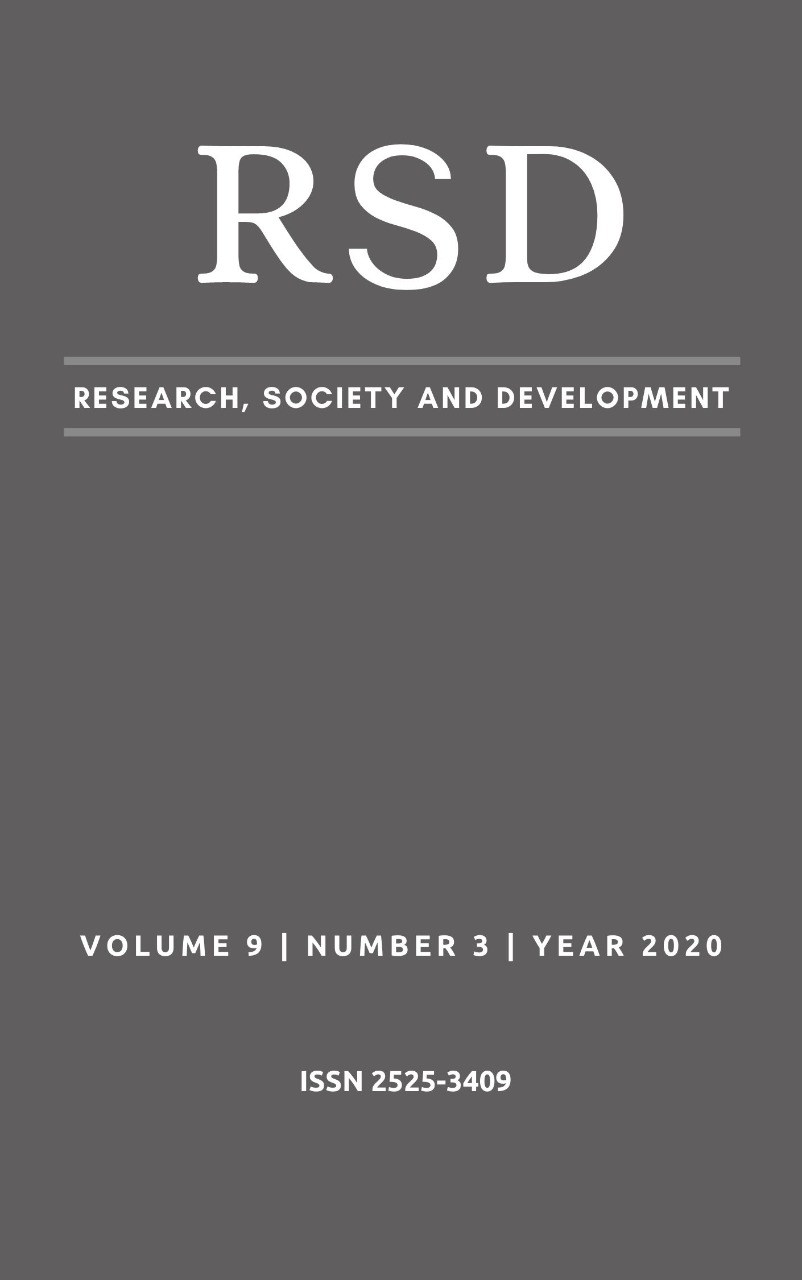A química forense como tema contextualizador no ensino de química
DOI:
https://doi.org/10.33448/rsd-v9i3.2772Palavras-chave:
Contextualização, Química Forense, Aprendizagem.Resumo
Este artigo é um recorte de uma pesquisa de mestrado e tem como objetivo apresentar os resultados da aplicação de uma série de atividades relacionadas à Química forense para a aprendizagem potencialmente significativa de conteúdos de química, pois, devido a sua presença na mídia em diversos seriados e noticiários televisivos, acredita-se que esta possui uma linguagem que dialoga e desperta o interesse de estudantes pelos conhecimentos científicos. Essa pesquisa partiu do questionamento: A química forense como tema contextualizador leva a uma aprendizagem significativa? A abordagem da pesquisa foi qualitativa do tipo pesquisa-ação. Participaram dessa pesquisa 24 alunos do Ensino Médio Técnico em Química de uma escola particular do estado de São Paulo. As atividades envolveram a resolução de um “crime”. Para sua resolução, os alunos realizaram uma série de experimentos da química forense: Extração de DNA, revelação de impressões digitais com carvão e iodo, teste do bafômetro, revelação de pegadas e simulação do airbag, além de assistirem vídeos temáticos e responderem três atividades avaliativas (Pré-teste; Pós-teste 1; Pós-teste 2). Os resultados evidenciaram que os alunos compreenderam com mais facilidade os conteúdos de química abordados nas atividades, houve maior envolvimento, interesse e motivação dos alunos em aprender química. Desta forma, pode-se concluir que a contextualização a partir da química forense leva a aprendizagem potencialmente significativa dos conhecimentos de química.
Referências
Ausubel, D.P. (2003). Aquisição e retenção de conhecimentos. Lisboa: Platano Edições Técnicas.
Brasil (1999) Ministério da Educação. Secretaria de Educação Média e Tecnológica. Parâmetros Curriculares Nacionais para o Ensino Médio: Ciências da Natureza, Matemática e suas Tecnologias. Brasília: MEC; Semtec.
Domingues, J. J. et al. (2000). A reforma do Ensino Médio: A nova formulação curricular e a realidade da escola pública. Educação & Sociedade, v.21, n.70, p.63-79.
Guimarães, C. C. (2009). Experimentação no Ensino de Química: Caminhos e Descaminhos rumo à aprendizagem significativa. Química Nova na Escola, 31(3), 198- 202.
Lopes, A. R. C. (2002). Hibridismo de discursos curriculares na disciplina escolar química. In: Reunião Anual da Sociedade Brasileira de Química, Poços de Caldas.
Milaré, T. (2008). Ciências na 8ª série: da Química disciplinar à Química do Cidadão. Dissertação de Mestrado, Universidade Federal de Santa Catarina, Florianópolis, SC, Brasil.
Moreira, M. A. (2010). Mapas conceituais e aprendizagem significativa. São Paulo: Centauro, 2010.
Moreira, M. A. (2012). Ensino de Ciências e Matemática: resenhas e reflexões. Revista Brasileira de Estudos Pedagógicos RBEP-INEP, (93), 486-501.
Mortimer, E. F. et al. (2012). Água em Foco: Qualidade de Vida e Cidadania. Belo Horizonte, Minas Gerais.
Mortimer, E. F. & Scott, P. (2002). Atividade discursiva nas salas de aula de ciências: uma ferramenta sociocultural para analisar e planejar o ensino. Investigações em Ensino de Ciências, Porto Alegre, 7(3), 283-306.
Nunes, A. S.; Adorni, D.S. (2010). O ensino de química nas escolas da rede pública de ensino fundamental e médio do município de Itapetinga-BA: O olhar dos alunos. In: ENCONTRO DIALÓGICO TRANSDISCIPLINAR - Enditrans, Vitória da Conquista, BA.
Nunes, P. P. (2017). Contextualização e abordagem de conceitos químicos por meio da química forense: Uma sequência didática para o ensino médio no ensino da química. Dissertação de Mestrado, Universidade Federal do Amazonas, Manaus, AM, Brasil.
Pozo, J. I & Crespo, M.A.G. (2009). A aprendizagem e o ensino de ciência: do conhecimento cotidiano ao conhecimento científico. 5. Ed. Porto Alegre: Artmed.
Raboni, P. C. A. (2002). Atividades práticas de ciências naturais na formação de professores para as séries iniciais. Tese de Doutorado, Universidade de Campinas. Campinas, SP, Brasil.
Scharfenberg, F. & Bogner, F.X. (2010). Instructional Efficiency of Changing Cognitive Load in an Out-of-School Laboratory. International Journal of Science Education, 32(6), 829-844.
Silva, E. L. (2007). Contextualização no ensino de Química: ideias e proposições de um grupo de professores. Dissertação de Mestrado, Universidade de São Paulo, São Paulo, SP, Brasil.
Silva, E. L. & Marcondes, M. E. R. (2010). Visões de Contextualização de Professores de Química na Elaboração de Seus Próprios Materiais Didáticos. Rev. Ensaio, Belo Horizonte, 12(1),101-118.
Wartha, E. J., Silva, E.L. & Bejarano, N.R.R. (2013). Cotidiano e Contextualização no Ensino de Química. Química Nova na Escola, 35(2), 84-91.
Downloads
Publicado
Edição
Seção
Licença
Autores que publicam nesta revista concordam com os seguintes termos:
1) Autores mantém os direitos autorais e concedem à revista o direito de primeira publicação, com o trabalho simultaneamente licenciado sob a Licença Creative Commons Attribution que permite o compartilhamento do trabalho com reconhecimento da autoria e publicação inicial nesta revista.
2) Autores têm autorização para assumir contratos adicionais separadamente, para distribuição não-exclusiva da versão do trabalho publicada nesta revista (ex.: publicar em repositório institucional ou como capítulo de livro), com reconhecimento de autoria e publicação inicial nesta revista.
3) Autores têm permissão e são estimulados a publicar e distribuir seu trabalho online (ex.: em repositórios institucionais ou na sua página pessoal) a qualquer ponto antes ou durante o processo editorial, já que isso pode gerar alterações produtivas, bem como aumentar o impacto e a citação do trabalho publicado.


